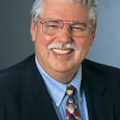MARKET WATCH: Gas price rises on production cuts
The front-month natural gas contract climbed 4% Feb. 9 in the New York market after Chesapeake Energy Corp. told investors its production cuts are actually more than the minimum 500 Mcfd it indicated last month.
Chesapeake announced plans to cut its operated dry gas drilling rig count to 24 rigs, a decline of 50 rigs from its 2011 average operated dry gas rig count, citing the lowest natural gas prices in 10 years (OGJ Online, Jan. 23, 2012).
West Texas Intermediate and Brent crudes increased 1% each after a Greek coalition of socialist and conservative politicians agreed to spending-reduction alternatives to those rejected earlier.
Both oil and equity stock prices dropped in early trading Feb. 10 after finance ministers of the other Euro-Zone countries insisted Greece reduce spending another €325 million through legislation to be passed by the Greek parliament and to guarantee enforcement of the austerity measures following elections in April. A general strike in Greece turned violent, and three ministers and two deputy ministers resigned after that demand.
“Yesterday, Greece pledged to make all sorts of reforms and budgetary cuts, but it seems that the German are less and less keen on giving money against a pledge that is undone once the money is in the bank. This being said with the austerity measures that Greece is told to take, we really don’t know how economic growth is going to come back ever to that country,” said Olivier Jakob at Petromatrix in Zug, Switzerland.
Meanwhile, data from the Organization for Economic Cooperation and Development show Greece loaded up in November on Iranian crude, with imports “at the highest level since September 2008 and [amounting to] 55% of the Greek crude oil imports,” Jakob said. “Over the 6 months to November, Greece on average imported 51% of its crude oil from Iran. The OECD countries of Europe imported 871,000 b/d of crude oil from Iran in November; the European Union countries (i.e. excluding Turkey) imported 693,000 b/d of crude from Iran.” Imports into the EU were split 24% into the northern countries (167,000 b/d) and 76% into the southern countries (526,000 b/d).”
James Zhang at Standard New York Securities Inc., the Standard Bank Group, said, “The oil market continued with its strong rally yesterday but with further signs of being overstretched as term structures failed to follow flat price moves. Oil products were also higher on the day, led by a rebound in gasoline driven by some follow-though buying after [the Energy Information Administration’s Feb. 8] inventory report. The ICE gasoline market is strong due to continuous cold weather in Europe.”
Energy prices
The March contract for benchmark US light, sweet crudes climbed as high as $100.18/bbl in intraday trading Feb. 9 before closing at $99.84/bbl, up $1.13 for the day on the New York Mercantile Exchange. The April contract increased $1.14 to $100.24/bbl. On the US spot market, WTI at Cushing, Okla., was up $1.13 to $99.84/bbl.
Heating oil for March delivery gained 1.9¢ to $3.21/gal on NYMEX. Reformulated stock for oxygenate blending for the same month rose 3.76¢ to $3.01/gal.
The March natural gas contract regained 2.9¢ to $2.48/MMbtu on NYMEX, wiping out the loss from the previous session. On the US spot market, gas at Henry Hub, La., reclaimed 1.7¢ to $2.50/MMbtu.
In London, the March IPE contract for North Sea Brent increased $1.39 to $118.59/bbl
Gas oil for February was up $6.75 to $997.75/tonne.
The average price for the Organization of Petroleum Exporting Countries’ basket of 12 benchmark crudes increased $1.09 to $116.27/bbl.
Contact Sam Fletcher at [email protected]
About the Author

Sam Fletcher
Senior Writer
I'm third-generation blue-collar oil field worker, born in the great East Texas Field and completed high school in the Permian Basin of West Texas where I spent a couple of summers hustling jugs and loading shot holes on seismic crews. My family was oil field trash back when it was an insult instead of a brag on a bumper sticker. I enlisted in the US Army in 1961-1964 looking for a way out of a life of stoop-labor in the oil patch. I didn't succeed then, but a few years later when they passed a new GI Bill for Vietnam veterans, they backdated it to cover my period of enlistment and finally gave me the means to attend college. I'd wanted a career in journalism since my junior year in high school when I was editor of the school newspaper. I financed my college education with the GI bill, parttime work, and a few scholarships and earned a bachelor's degree and later a master's degree in mass communication at Texas Tech University. I worked some years on Texas daily newspapers and even taught journalism a couple of semesters at a junior college in San Antonio before joining the metropolitan Houston Post in 1973. In 1977 I became the energy reporter for the paper, primarily because I was the only writer who'd ever broke a sweat in sight of an oil rig. I covered the oil patch through its biggest boom in the 1970s, its worst depression in the 1980s, and its subsequent rise from the ashes as the industry reinvented itself yet again. When the Post folded in 1995, I made the switch to oil industry publications. At the start of the new century, I joined the Oil & Gas Journal, long the "Bible" of the oil industry. I've been writing about the oil and gas industry's successes and setbacks for a long time, and I've loved every minute of it.